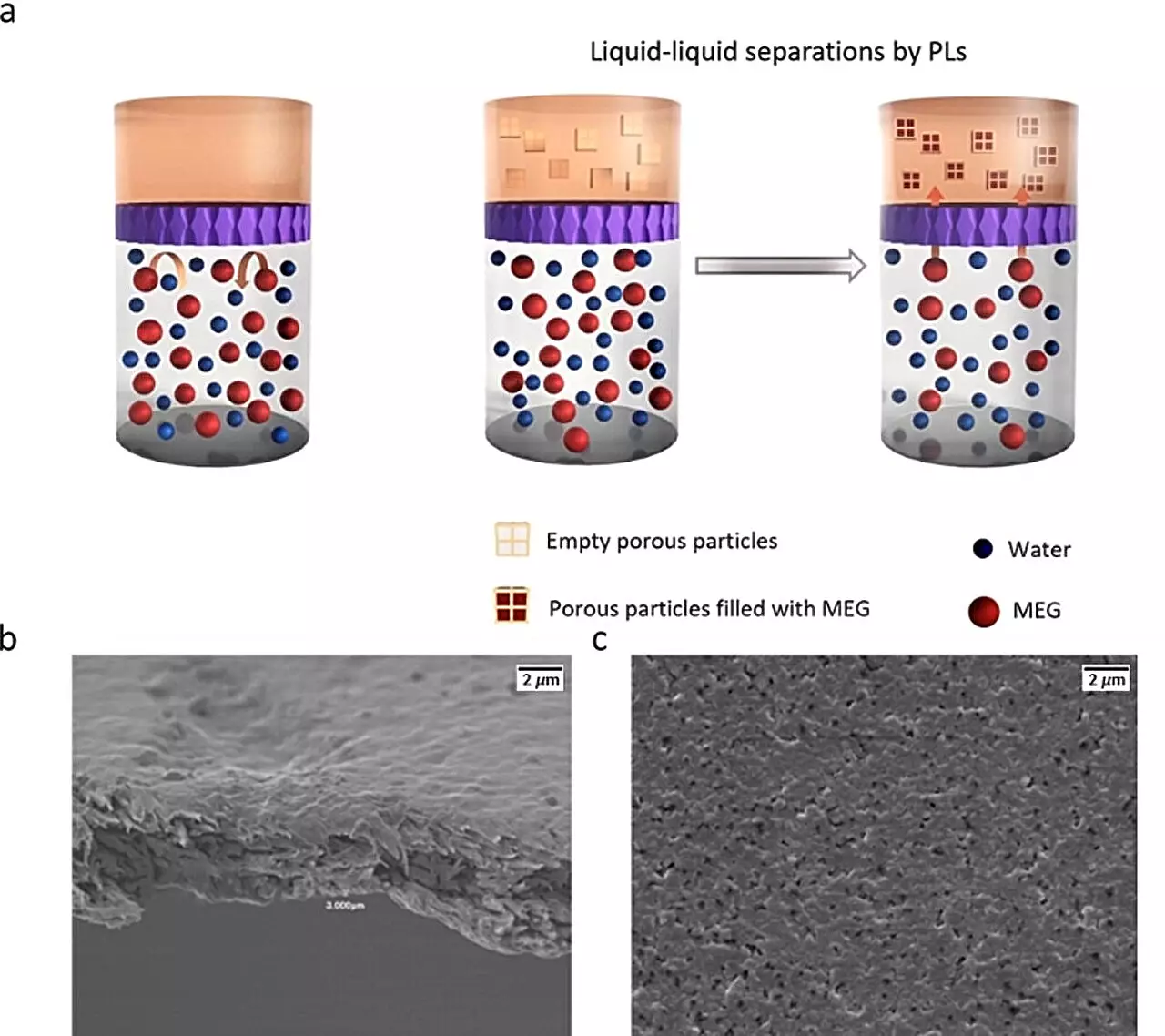In a groundbreaking study, researchers from the University of Birmingham and Queen’s University Belfast have unveiled the remarkable capabilities of porous liquids (PLs) in achieving liquid-liquid separation. This innovative technique could herald a new era in environmental sustainability and public health by efficiently removing harmful substances from mixtures. By uncovering the utility of PLs, the scientists aim not only to tackle significant industrial challenges but also to explore applications in various sectors, including food and beverage manufacturing.
One of the most pressing issues this research seeks to address is the harmful environmental impact of monoethylene glycol (MEG), a commonly used de-icing agent in the aeronautical industry. The disposal of MEG-water mixtures poses substantial risks to ecosystems, particularly aquatic life. MEG, while effective for de-icing, creates toxic run-off when not handled properly. This study demonstrates that Type 3 porous liquids can selectively absorb MEG from contaminated water, effectively removing up to 88% of the liquid’s harmful components. This capability not only mitigates environmental hazards but also provides a tangible solution to a problem that has plagued airports where massive quantities of MEG-water waste are currently stored due to the inability to dispose of them safely.
The implications of this research extend beyond aviation. The scientists behind this study also explored the role of porous liquids in the beverage sector, particularly in reducing alcohol content in wines and gins. Unlike traditional methods that often compromise flavor, the use of non-toxic, pH-resistant PLs offers a unique advantage. These liquids can lower alcohol levels while preserving the drink’s original taste profile, catering to the rising consumer demand for lower-alcohol alternatives that do not sacrifice enjoyment. Assistant Professor Deborah Crawford from the University of Birmingham emphasizes how this approach could disrupt the beverage market, making it possible to produce low-alcohol options without the undesirable effects typically associated with such beverages.
The promising findings of this research open the door to further exploration of porous liquids in various industries. The potential for using PLs to enhance liquid-liquid extraction processes is particularly intriguing, with applications ranging from waste treatment to the pharmaceutical industry. As researchers continue to refine and develop these liquids, we can expect innovative solutions that align with both environmental sustainability goals and consumer preferences.
This pioneering study highlights the transformative potential of porous liquids in addressing urgent environmental challenges while also catering to evolving market demands. As the world grapples with pollutant disposal and the growing inclination toward health-conscious consumption, understanding and utilizing PLs might just be the key to fostering more sustainable practices across multiple industries. The research not only showcases an exciting advancement in chemistry but also emphasizes the importance of innovative thinking in solving modern-day problems.

